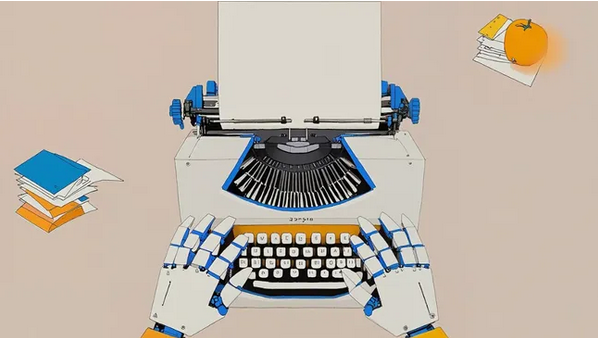5 Ways Writing Instruction Should Evolve In The Age of AI
AI is here to stay, and we need to find ways that AI can help our students while also creating assignments that prioritize human creativity and protect “real” writing.
Current generative AI policies around writing are widely inconsistent. I’ve seen departments that discourage the use of any assistive technology for writing, including a Grammarly-style spellcheck. Others have mandated that instructors incorporate AI lessons into their classrooms as they believe use of AI is the future and that it will help students write.
As a writer and writing professor, I don’t believe either approach gets it quite right. On one hand, we need to do a much better job protecting the sanctity of human writing and draw a line in the sand—making sure all students engage with the cognitively beneficial and emotionally rewarding process of really writing. On the other hand, AI writing is here to stay, and there are some tedious aspects of writing that AI can help with, as well as ways in which students can hone their writing skills to better utilize it in their future careers and lives.
To find the right balance between these two approaches, I think writing instruction and assignments could use an upgrade. Here are five steps writing instructors can take to improve writing instruction in the age of AI.
1. Let AI Handle Formatting and Citations
Too much of my time as a student was spent agonizing over whether my citations and endnotes adhered to MLA stylebook, or whichever stylebook my teacher required. As an instructor, too much of time is spent making sure students adhere to various stylebooks required by different disciplines.
Citations and endnotes are something the robot AI writers will do better and quicker than us, and I’m happy to cede this work. Let’s teach students how to use the technology available to format their papers better in less time so they can focus on real writing.
The same might go for finding sources in some cases. Sometimes, conducting your own research and going down your own rabbit holes will be helpful; other times AI might help speed this process.
We also should tell students about potentially more efficient approaches, such as Google Scholar’s new AI summaries of research.
2. Teach How To Use AI For Cover Letters and Other Application Documents
I don’t love focusing writing instruction on career opportunities because, in my eyes, it diminishes writing, which I have always seen as far more important than simply a career skill.
That said, many of the career-oriented lessons we once taught, such as writing résumés, professional emails, and cover letters, might now be better accomplished with the help of AI. These types of documents are often so constrained by guidelines that they tend to be generic anyhow, and tailoring each specifically to a particular job, as is generally best, can make a job hunt even more agonizing.
One recent graduate told me how they used AI to write dozens of personalized cover letters per day and that’s how they ultimately landed a prestigious research position. Many big companies are using AI to scan initial applications anyhow, so I see no problem in helping our students level the playing field.
Of course, students must be taught to critically read their AI cover letters and application materials to ensure these are accurate, truthful, and are not too generic. You don’t want to be submitting the same letter dozens of other applicants did because they used AI, too.
3. Prioritize Originality
AI writing tends to be lifeless, cliché-filled, and boring—minus an occasional unintentionally entertaining hallucination.
To combat unwanted AI submissions in our class, we need to encourage writing that is the opposite of that. Let’s stop deducting points for students using the word “I” in their paper and encourage them to share their perspectives in unique and new ways. Let’s grade for originality and design assignments that require them to do things such as conduct new experiments, unearth historic documents, or interview people, and get fresh quotes not found on the internet.
The more real and practical we make our writing assignments, the better these assignments will be overall and the harder it will be for AI to duplicate any. For example, AI can write a decent paper about Juan Soto and how he recently snubbed the Yankees by signing with the Mets, but it can’t interview your school’s history teacher, who used to play minor league baseball and fell in love with history because he had nothing else to do but read during long bus trips.
4. Writing Instruction Should Include Prompt Writing
Like it or not, writing effective AI prompts will be a skill that is important in the future. Writing, English communications, and the liberal arts departments in general should not cede this important modern-world skill to the computer science department.
Instead, these groups should work with the tech department to develop collaborative assignments and AI understanding so students can use the skills they learn in writing class to get the best out of their AI use.
Studying the ways in which AI responds to different prompts can also be a good way to study language and its intricacies. Yes, teaching students to get better at AI use might make them better at cheating on assignments for which you don’t want them to utilize AI. But I don’t think we should let fear of misuse blind us to potential benefits.
I also think we need to push for more effective institutional responses to prohibited AI use in class, so teachers can spend less time weeding out AI and more time teaching traditional writing, and even writing with AI.
5. Remind Everyone of Writing’s Cognitive and Emotional Impact All The Time
Sometimes those who are too pro-AI writing sound to me like someone who is questioning why anyone would walk or run to the store when they could drive there much quicker. Sure, the car will get you there and save you the physical exertion, which might be painful at times, but by doing so it will rob you of the health benefits of exercise and–forgive the cliché–the joys of the journey.
Writing is the same, even in those rare instances when AI can do it as well as a human. We need to remind students, administrators, and ourselves that writing isn’t about getting from a blank page to one filled with words. It’s about debating with ourselves and researching and thinking and building our knowledge of a topic while clarifying our thoughts.
Writing has been shown to help us learn, but it does more than that. When we write, we create, and while it isn’t always easy, there is something so profound and satisfying about sharing our inner thoughts. In other words, writing is one of the great joys of being human and I’m not ready for the machines to rob me or my students of that.
Source: https://www.techlearning.com/news/5-ways-writing-instruction-should-evolve-in-the-age-of-ai




